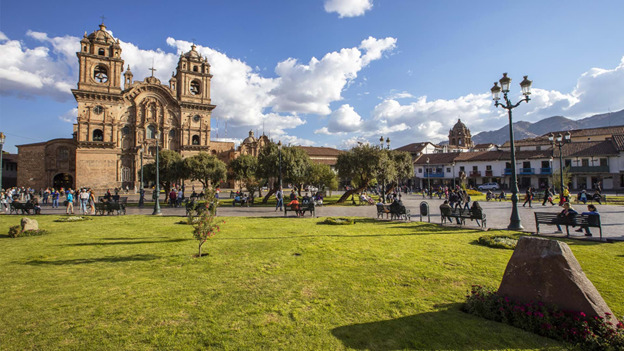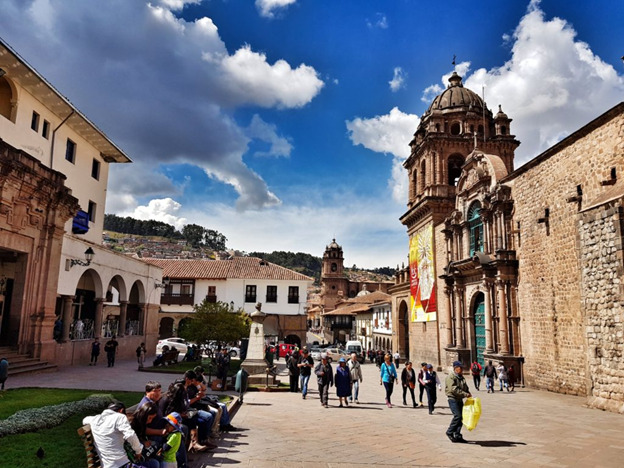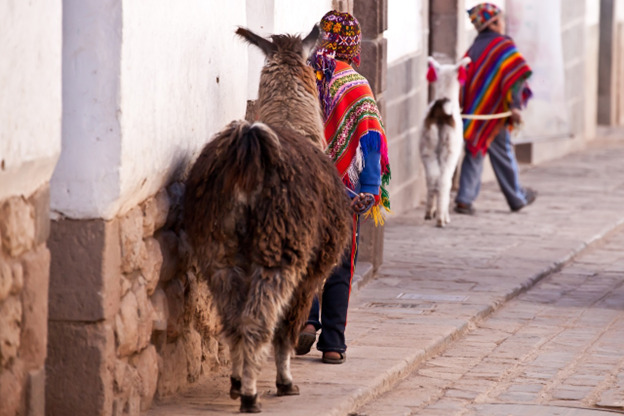
Cusco Elevation and Altitude Sickness: Prevention and Tips | Travel Blog
Cusco, nestled high in the Andes mountains of Peru, is a city that captivates travelers with its rich history and stunning landscapes. However, the Cusco elevation, approximately 3,400 meters (11,200 feet) above sea level, can pose a challenge for visitors.
Altitude sickness, or acute mountain sickness (AMS), is a common concern for those traveling to high-altitude destinations like Cusco. Symptoms such as headaches, dizziness, and shortness of breath can occur, affecting anyone regardless of age or fitness level.
But fear not, with the right preparation and knowledge, you can mitigate the risks and enjoy your journey to this remarkable city. This guide aims to provide you with practical tips and remedies for preventing altitude sickness.
We'll delve into understanding the elevation of Cusco Peru, recognizing the symptoms of altitude sickness, and key strategies for prevention. We'll also share insights on acclimatizing to Cusco's altitude and how to prepare for your trip.
So, whether you're an adventure seeker, a cultural enthusiast, or simply planning your next trip, this guide will equip you with the necessary information to navigate Cusco's high altitude. Let's embark on this journey together, ensuring a safe and memorable experience in the heart of the Andes.
Table of content
- Understanding Cusco's Elevation
- What is Altitude Sickness?
- Recognizing the Symptoms of Altitude Sickness
- Key Strategies for Altitude Sickness Prevention
- Practical Tips for Acclimatizing to Cusco's Altitude
- Remedies and Treatments for Altitude Sickness
- Cultural Insights and Sustainable Travel in Cusco
- Preparing for Your Trip to Cusco
- Embracing Cusco's Elevation for an Unforgettable Experience
Understanding Cusco's Elevation
Cusco lies high in the Peruvian Andes, acting as a gateway to the sacred Inca site of Machu Picchu. At about 3,400 meters (11,200 feet) above sea level, Cusco's elevation can be challenging for those unaccustomed to high altitudes. Its distinctive location contributes significantly to its climate and weather patterns, which can change rapidly.
When we consider other high-altitude cities, Cusco stands among the highest. For comparison, Denver in the United States is only 1,609 meters (5,280 feet) above sea level, far lower than Cusco. In Bolivia, La Paz reaches even higher, with parts of the city sitting at over 3,600 meters (11,800 feet).
Here's a list of high-altitude cities for a quick comparison:
- Cusco, Peru: 3,400 meters (11,200 feet)
- La Paz, Bolivia: 3,640 meters (11,942 feet)
- Denver, USA: 1,609 meters (5,280 feet)
These cities, including Cusco, offer beautiful vistas but also pose altitude challenges. Therefore, understanding Cusco's elevation is crucial. It helps prepare travelers for the physical demands of higher altitudes. With proper acclimatization strategies, you can fully enjoy the cultural and historical wonders waiting at such heights.
What is Altitude Sickness?
Altitude sickness, also known as acute mountain sickness (AMS), occurs when your body struggles to adapt to lower oxygen levels at high altitudes. People can experience it as low as 2,500 meters (8,200 feet), putting Cusco visitors at risk. The primary causes include rapid ascent without proper acclimatization, limiting the body’s ability to adjust.
At high altitudes, the air pressure decreases, and each breath delivers fewer oxygen molecules to your lungs. This oxygen reduction forces the body to work harder to obtain adequate levels of this vital element. Your body may react by increasing your breathing and heart rate, leading to discomfort.
Symptoms often manifest as headaches, nausea, dizziness, and fatigue. These effects can vary from mild to severe, depending on your altitude and individual susceptibility. Recognizing how altitude affects the body helps travelers plan for a safer, more enjoyable journey in places like Cusco.
Recognizing the Symptoms of Altitude Sickness
Altitude sickness symptoms can emerge quickly, so awareness is crucial. Identifying them early can prevent more serious health issues. Typical symptoms range in severity and can vary among individuals.
Common symptoms include:
- Headache
- Nausea and vomiting
- Dizziness or lightheadedness
- Fatigue and weakness
- Loss of appetite
- Shortness of breath
Some symptoms may resemble other common illnesses, leading to confusion. However, paying attention to the timing and setting of these symptoms can help distinguish them from other conditions. They usually develop within hours of ascending to higher altitudes.
If symptoms worsen or persist, seek medical attention. Conditions like high-altitude pulmonary edema (HAPE) or high-altitude cerebral edema (HACE) could develop. Immediate medical care is vital as these conditions can be life-threatening if untreated. Always err on the side of caution to ensure your safety in Cusco.

Key Strategies for Altitude Sickness Prevention
Cusco altitude sickness prevention requires forethought and careful preparation. Gradual acclimatization is one of the most effective approaches. Allow your body time to adjust to high altitudes by ascending slowly.
Planning a few days at a lower altitude, like the Sacred Valley, can be beneficial. This helps your body build resilience before reaching high altitude in Cusco Peru. Consider arriving in a lower altitude city before proceeding to Cusco.
Staying hydrated is essential in combating altitude sickness. Drink plenty of water, but not excessively. Aim for regular, moderate water intake throughout the day. Dehydration can worsen altitude sickness symptoms, so maintain a balanced fluid intake.
Diet also plays a critical role in acclimatization. Foods high in carbohydrates can help your body adjust. Light meals can prevent digestive discomfort. Keep meals balanced and avoid overindulgence, especially in alcohol.
Medications such as acetazolamide can be helpful in reducing altitude sickness risks. Consult your healthcare provider before the trip to discuss this option. Start medication a day before ascending if recommended by a professional.
Natural remedies are also available in Cusco. Coca leaves and coca tea are popular local options known for alleviating symptoms. However, gauge your body's response carefully. These may not replace medical advice but can offer supplementary relief.

Practical Tips for Acclimatizing to Cusco's Altitude
Proper planning is key to acclimatizing successfully. Design your itinerary to allow gradual ascent to higher elevations. This strategy gives your body time to adjust without overwhelming it.
Avoid strenuous activities during the initial days in Cusco. Your body needs time to acclimatize to the thinner air. Save more demanding physical activities for later in your trip when you've adjusted.
Rest and sleep are critical in preventing altitude sickness. Ensure you get plenty of rest before and during your stay. Adequate sleep helps your body recover and adapt to the new environment.
Consider engaging in gentle activities like walking tours. This allows you to explore Cusco without overexerting yourself. Take it slow and enjoy the city at your own pace.
Keep these tips in mind for a smoother transition:
- Plan extra days for gradual acclimatization.
- Keep activities light and avoid exertion.
- Prioritize rest and proper sleep patterns.
- Reconsider activities like hiking until acclimated.
- Use your body's signals as a guide to adjust plans.
Listening to your body is crucial. It will signal when it needs rest or when it's ready for more. Embrace a flexible schedule and let your energy levels dictate your activities. By pacing yourself, you not only prevent altitude sickness but also enhance your overall experience in Cusco.
Remedies and Treatments for Altitude Sickness
Altitude sickness can affect anyone, so understanding remedies is vital. Over-the-counter medications like acetazolamide can aid acclimatization. Always consult a healthcare professional before using any medication.
In Cusco, locals use traditional remedies to alleviate altitude sickness symptoms. Coca leaves and coca tea are popular choices. They can help reduce headaches and nausea, providing some relief.
Know when to seek further help. If over-the-counter drugs and local remedies don't ease symptoms, consider supplemental oxygen. Oxygen can provide quick relief from more severe symptoms.
List of altitude sickness remedies to consider:
- Acetazolamide: Take as prescribed for symptom management.
- Coca Leaves and Tea: Chew leaves or drink tea for natural relief.
- Supplemental Oxygen: Use when symptoms persist or worsen.
- Rest and Hydration: Ensure continued rest and water intake.
- Seek Medical Attention: If symptoms remain severe or increase.
Selecting the right remedy depends on individual needs and severity. Use local resources and knowledge, as Cusco's locals have centuries of experience dealing with altitude. Remember, addressing altitude symptoms promptly ensures a more enjoyable and healthier trip.

Cultural Insights and Sustainable Travel in Cusco
Embracing Cusco's rich culture enhances your travel experience. Start by respecting local customs and traditions. Understanding cultural practices shows respect and fosters a deeper connection with the people.
Supporting local businesses is crucial for sustainable travel. When shopping, choose local markets over international chains. Dining at local eateries helps sustain the community and allows you to taste authentic Peruvian flavors.
Sustainable tourism practices are key to preserving Cusco's beauty and heritage. Be mindful of your environmental impact. Respect the environment and local communities by minimizing waste and preserving resources.
At Voyagers Travel, we promote the responsible visits along the Jewels of Peru Tour and other services we provide. Discover the Peruvian Andes and the Coastal region of this amazing country.
Engaging with the locals in a respectful way leads to more meaningful interactions. Learn some Quechua phrases to show your appreciation for the indigenous language. Sustainable travel ensures that future travelers can also enjoy Cusco's cultural richness. Appreciate the resilience and hospitality of Cusco's people, and strive to give back positively during your visit.

Preparing for Your Trip to Cusco
Physical preparation is vital for high-altitude travel. Before your trip, engage in cardiovascular exercises to boost stamina. Exercises like jogging or cycling can help your body adapt better to Cusco city elevation.
Packing smartly ensures a comfortable journey. Bring layers for Cusco's variable weather and sturdy shoes for exploring. A small first-aid kit, including altitude sickness remedies, is essential for quick access.
Consider purchasing travel insurance that covers high-altitude activities. This provides peace of mind if medical issues arise. Confirm coverage details and ensure they're appropriate for your planned activities in Cusco.
Learning basic Spanish phrases enhances communication with locals. This effort can improve your cultural experience and show respect. Simple phrases such as "por favor" (please) and "gracias" (thank you) go a long way.
With these preparations, you'll be ready to embrace Cusco's beauty and culture. Enjoy a memorable adventure by planning thoughtfully. Stay informed and open to the enriching experiences Cusco offers.
Embracing Cusco's Elevation for an Unforgettable Experience
Understanding how high is Cusco prepares you for an incredible journey. Preventing altitude sickness ensures comfort and lets you fully explore. Equipped with knowledge, you can savor Cusco's rich culture and stunning landscapes.
Responsible travel enriches your experience while preserving Cusco's beauty. Respect local customs, engage sustainably, and support the community. With thoughtful preparation and mindful practices, Cusco will become a cherished memory. Enjoy every moment of your high-altitude adventure during our Peru Inca Voyage Tour.
Check Our Suggested Tours:
- Family Adventure Tour
- Honeymoon In Peru - Peru Honeymoon Packages
- Following the Path to the Sacred Sun Gate
- Peru By Belmond Tour
- From the Heart of the Jungle to the Sacred Mountain: A Luxury Expedition Through the Amazon & Ausangate 16d/15n
- The Soul of Two Worlds: A Grand Amazon & Andes Expedition 14d/13n


